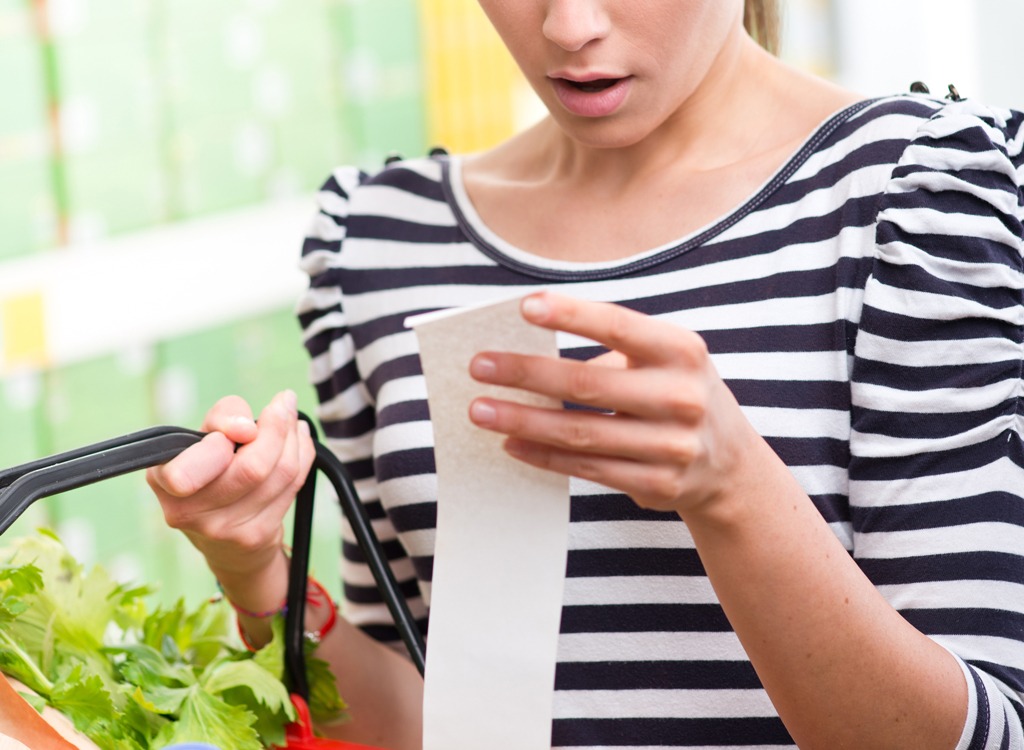
You try to pinch every penny you spend and even save a few extra bucks with coupons, but you’re probably still spending more than you should at the grocery store. Thanks to the psychological tricks of manufacturers, you’re likely getting cheated—or at least manipulated into spending more—every time you walk in the door. We’ve compiled the most common grocery store scams supermarkets use to drain you of cash so that you can be a bit more aware of what happens when you walk down the aisles. Check ’em out, and then think about your own habits.
Hot, Fresh Fibs for Sale
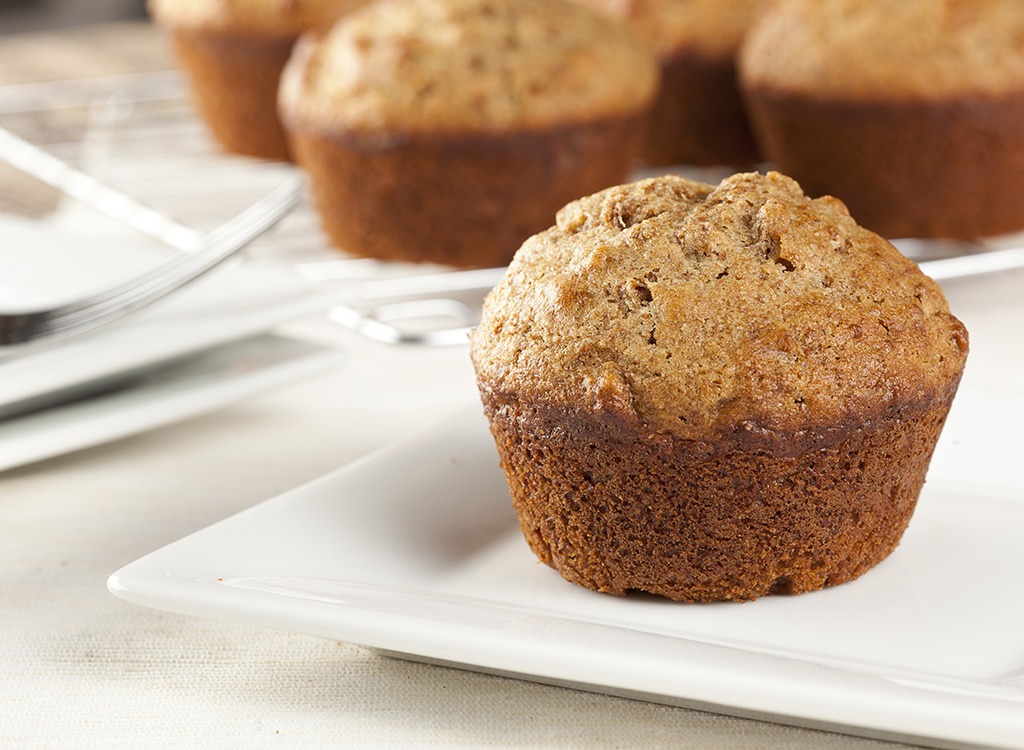
Many grocers have an on-site bakery that bakes bread, donuts, and other pastries from scratch. But others simply cook up frozen dough sent from outside manufacturers. “They arrive raw and we bake them and package them,” one Costco employee wrote on Reddit of the store’s cookies. “We do bake plenty of stuff from scratch (the ‘Birthday’ cakes, apple pies, pumpkin pies, etc.) but some items are brought in from outside and just thawed and packaged or baked and packaged.” So while you think you’re money is being spent on fresh items, you’re really just shelling out cash for previously-frozen goods. That’s not to say all frozen items are bad. For example, see these 46 Best Frozen Foods in America.
Something Fishy
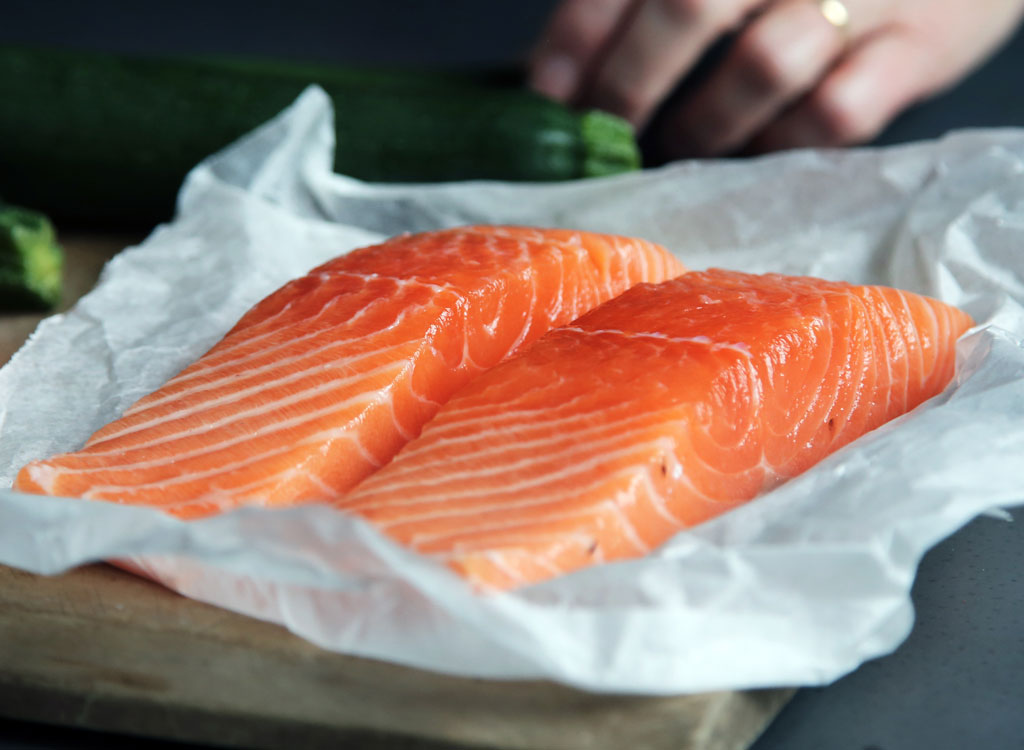
You know that wild-caught seafood is better than farm-raised, but many grocers are pulling a fast one by saying farm-raised is actually wild. And that’s not the worst of it; at some sketchy stores, the seafood you think you’re buying is actually something else. For example, it’s possible that the “scallops” are actually just punched out from the bodies of white fish. Talk about some fishy grocery store scams!
Not-So-Nice Spices
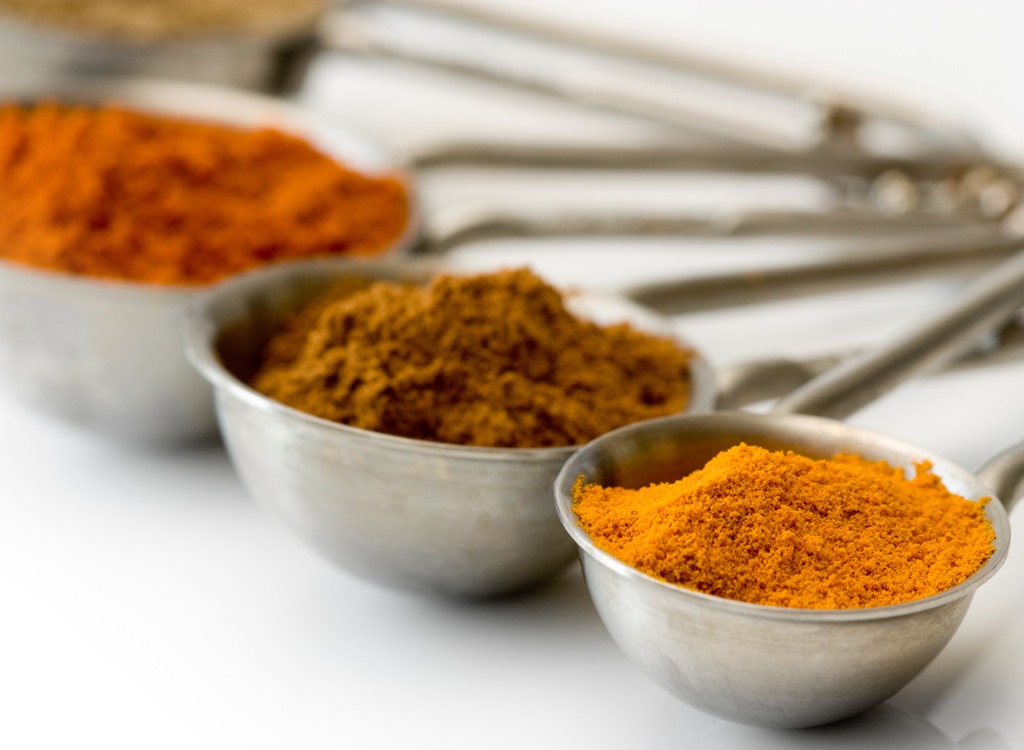
Spice fraud is pretty rampant around the world, especially given that some of the rarer spices go for big money. It’s not unheard of for spices like paprika to actually be made from leftovers of other spices. This can pose a serious health risk if you think you’re getting one spice but it’s something else.
Watered-Down Juice
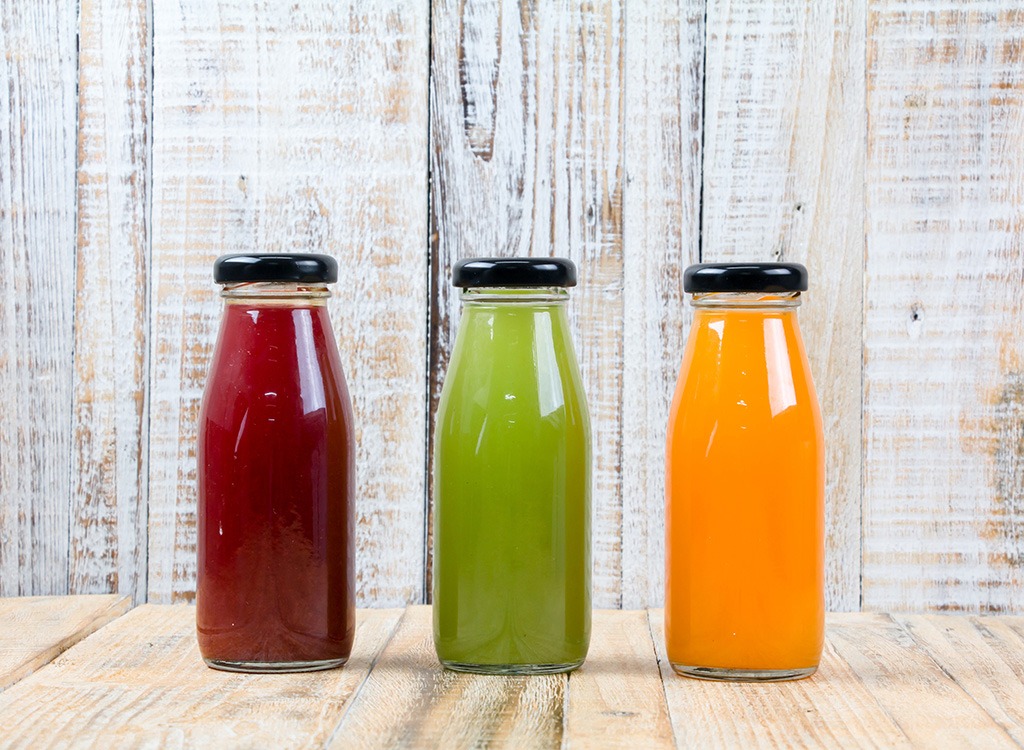
It’s actually really simple for food manufacturers to water down juice without anyone being the wiser. According to the U.S. Pharmacopeial Convention’s Food Fraud Database, orange juice is one of the main waterlogged juices. Other juices, like the trendy pomegranate juice, are cut with other juices—like apple juice—to increase volume. Our advice is to skip the juice altogether; the too-sweet beverages have been shown to make you fat. For more, check out these 18 Worst “Healthy” Store-Bought Juices.
Honey Hold-Up
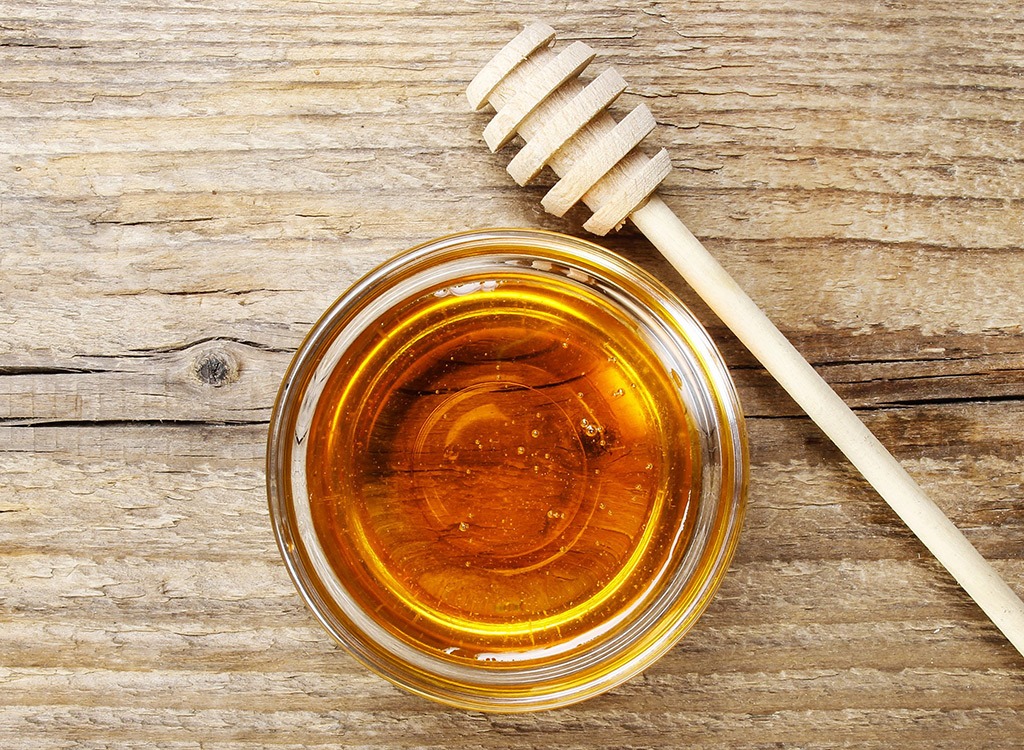
Adding a big squeeze or dollop of honey in your tea or on your oatmeal is a sweet treat, but much of the store-bought honey isn’t honey at all. According to a Food Safety News report, as much as 75 percent of the honey sold at stores doesn’t contain pollen. It’s still made from bees, but all of the pollen is pulled out during processing. And according to the Food and Drug Administration (FDA), any product that’s been ultra-filtered and no longer contains pollen isn’t actually honey.
Pumped-Up Meat
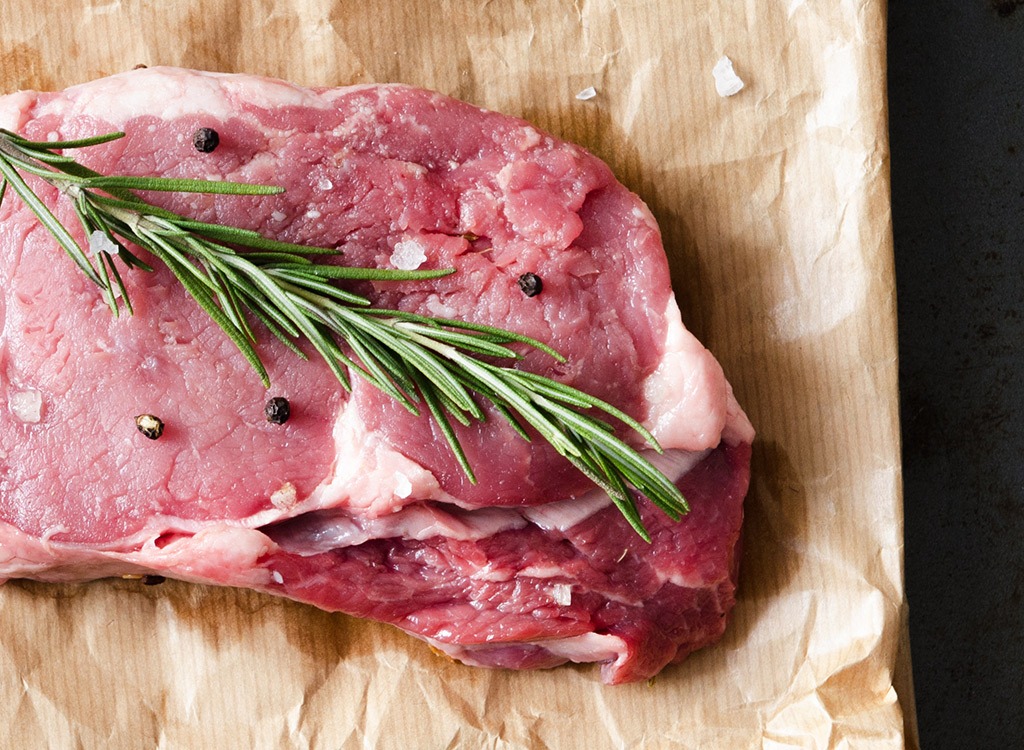
Read the label on many packages of meat like chicken and pork and you’ll find a note that says a saline solution has been added. The reason: Pumping up meat with water makes it bigger so you think you’re getting more, but you’re actually paying more per pound because of this water weight.
EVOO, Oh No!
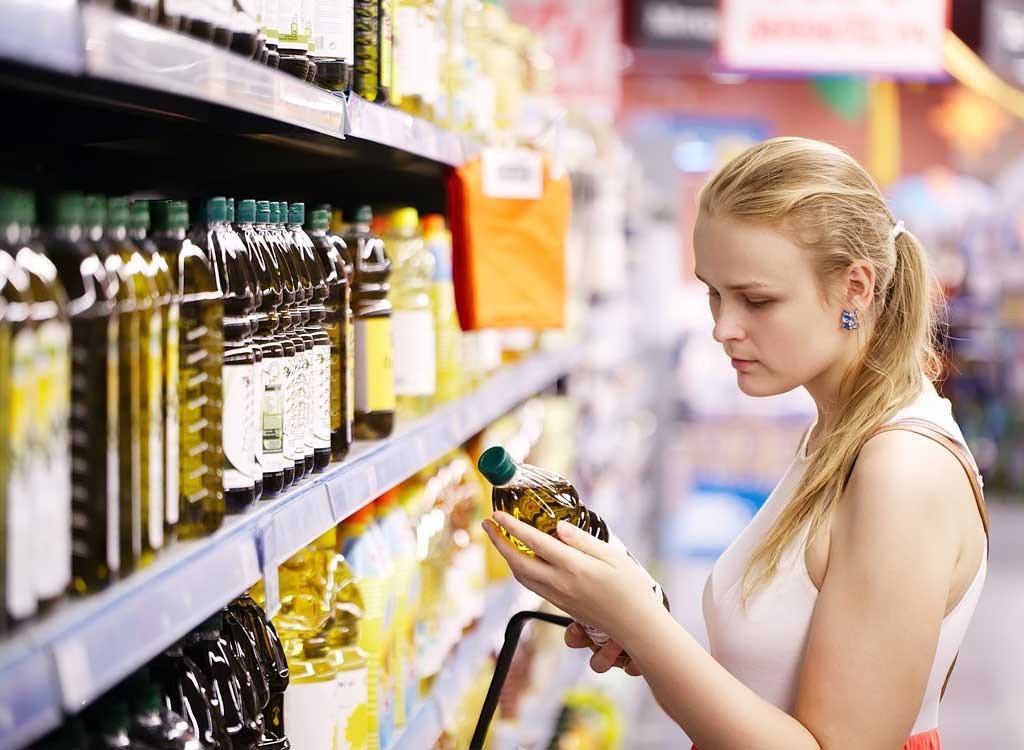
Olive oil is a $1.5 billion business in the United States, making it a huge target for fraud. According to Forbes, as much as 80 percent of Italian olive oil marketed as extra virgin is actually cut with other oil. Luckily, an Italian operation led to the arrest of 33 people believed to be running this scam in 2017, so these fraudulent oils could be leaving grocery store shelves soon.
Eggs That Aren’t What They Seem to Be
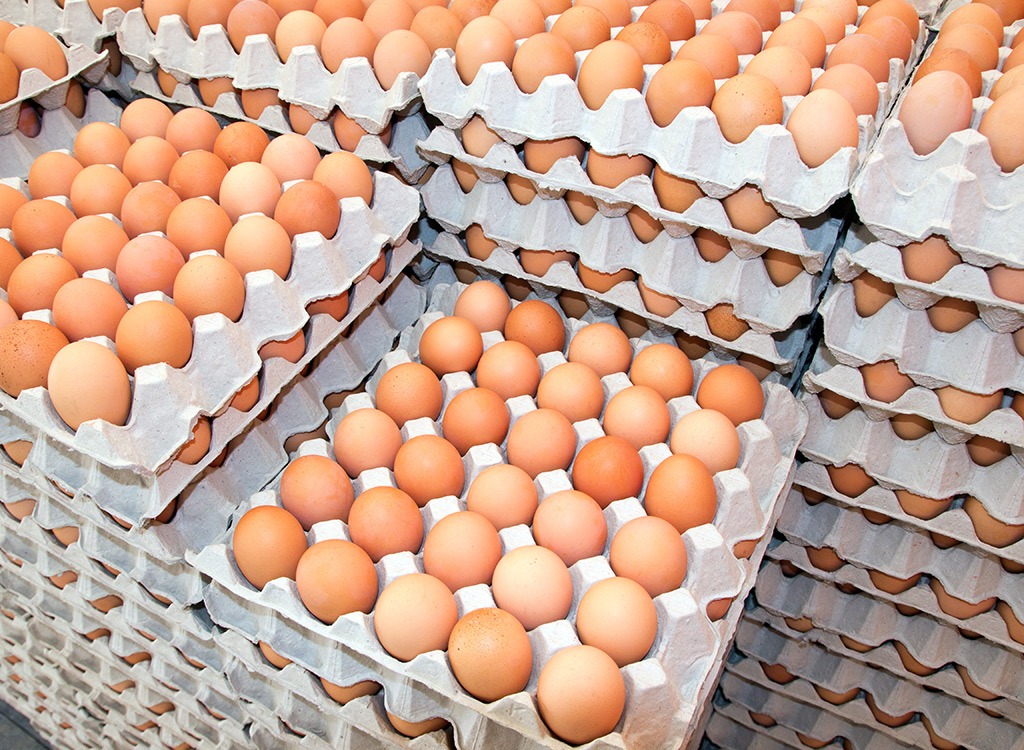
Although eggs are an amazing source of heart-healthy fats, their labeling is deemed one of our sneakiest grocery store scams yet. (Find out more about What Happens to Your Body When You Eat Eggs!) But the way eggs are marketed isn’t always an accurate reflection of reality. Cage-free eggs seem like a better alternative, but manufacturers have taken advantage of that, listing eggs as “cage-free” when they’re really raised in factories. (The cages just happen to be a bit bigger than conventional cages.) The reason is simple: They can charge more for these eggs and they’re cheaper to produce. The government is cracking down on these fraudsters, thankfully.
Produce Psychology
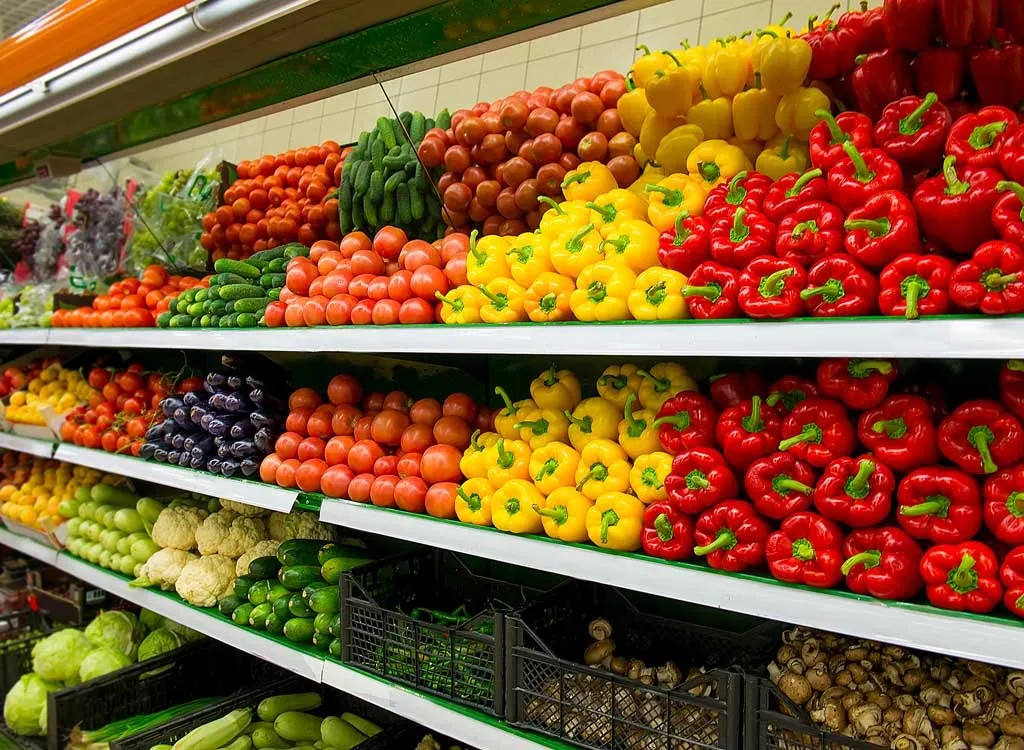
Every store has a rainbow of produce lined up near the front of the store. Weird, right? Not really: Research shows that people feel better about loading their carts with healthy produce and that they’re then more likely to splurge on other stuff in the aisles. It’s bittersweet to us—we’re just glad some of the healthiest whole foods aren’t totally hidden in the back.
Giant Carts
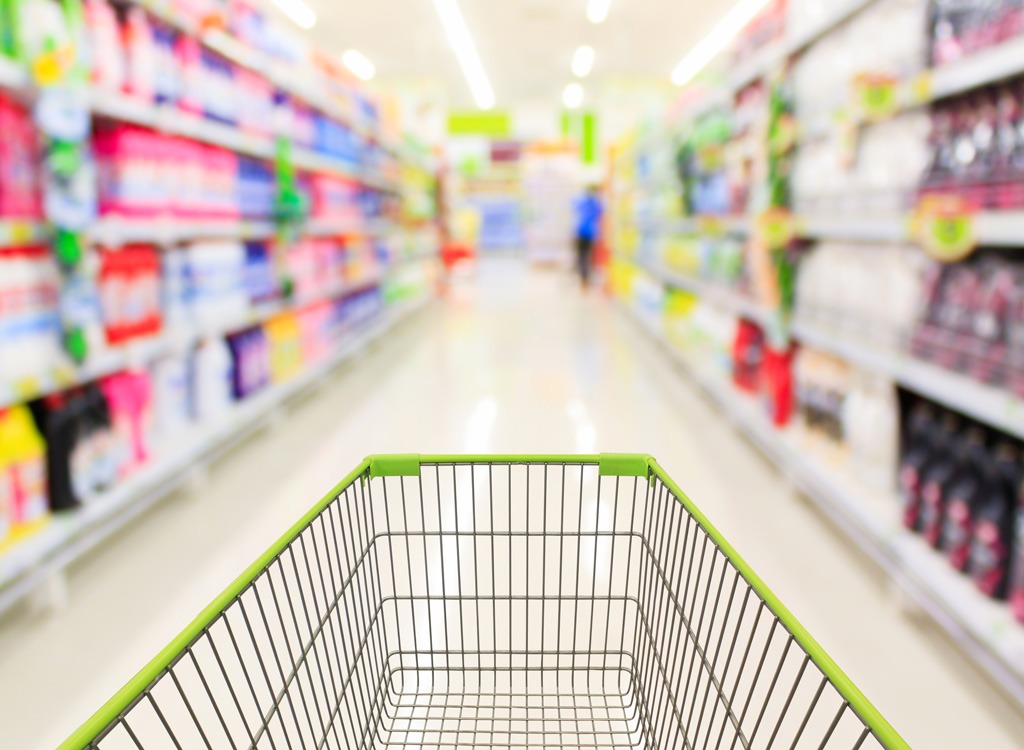
You aren’t imagining things; shopping carts really are getting bigger. The reason: Researchers found that people who used bigger carts ended up spending 40 percent more in the store—that’s a big chunk of change. Instead, grab a basket (but ugh, aren’t those also getting so big?!) or nothing at all if you really are hoping to only pick up a few things. And hey, check out these 17 Simple Ways to Save $255 a Month on Groceries!
Impulse Buys
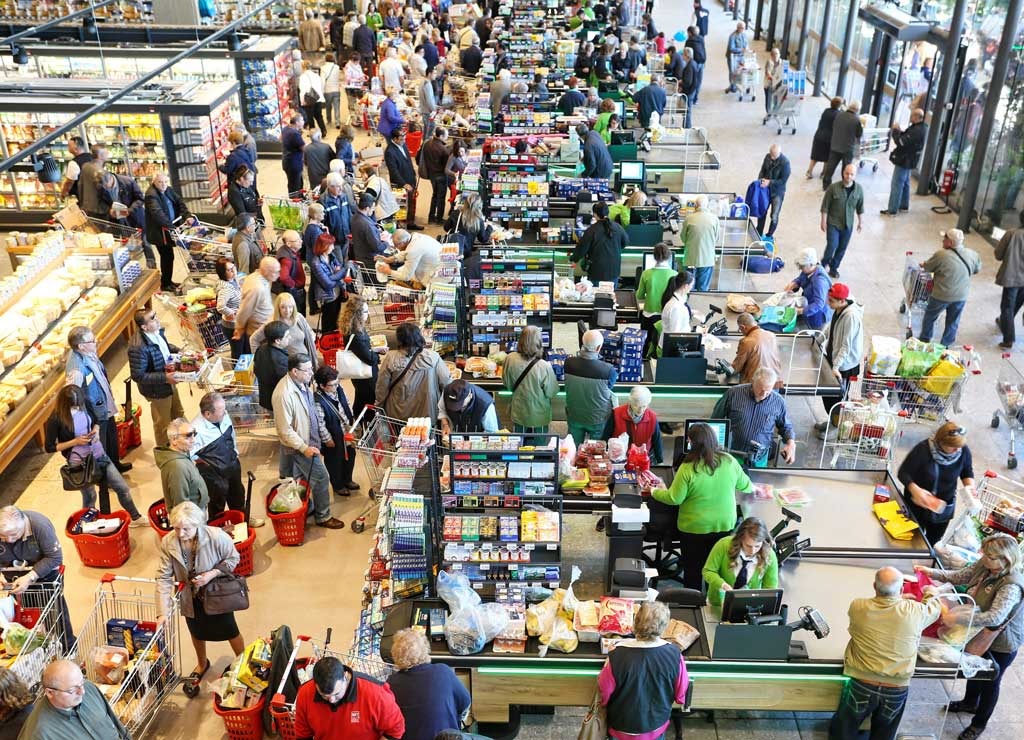
Candy! Cold soda! Chewing gum and chips! The options at the checkout counters are enticing and endless. That’s by design; placing all of the easy-to-grab, sweet, fizzy, and salty snacks at the front make it easy to just throw in your cart while you’re waiting to check out. Plus, it’s often placed so little kids have easy access. Stores know that a fussy child who wants candy is probably going to get what he wants.
Expensive Eye-Level

Think of the last time you looked for an item on the grocery shelf. Where did your eyes look first? The middle. Grocers know this and put the most expensive products there, knowing you’ll just grab the first can or box you see. Next time, try comparing the prices of products placed above and below—often you’ll find big price differences for a similar box of cereal or tub of oats for your overnight oats.
Hidden Essentials

It happens every time: You just need to pick up milk and eggs after work, but you have to trek all the way to the back of the store to get it. What gives? Maybe it’s the refrigeration system, maybe it’s a mechanism for temperature control, or maybe it’s so you’ll have to walk past — and possibly pick up — plenty of other products on the way.
End-Cap Enticements
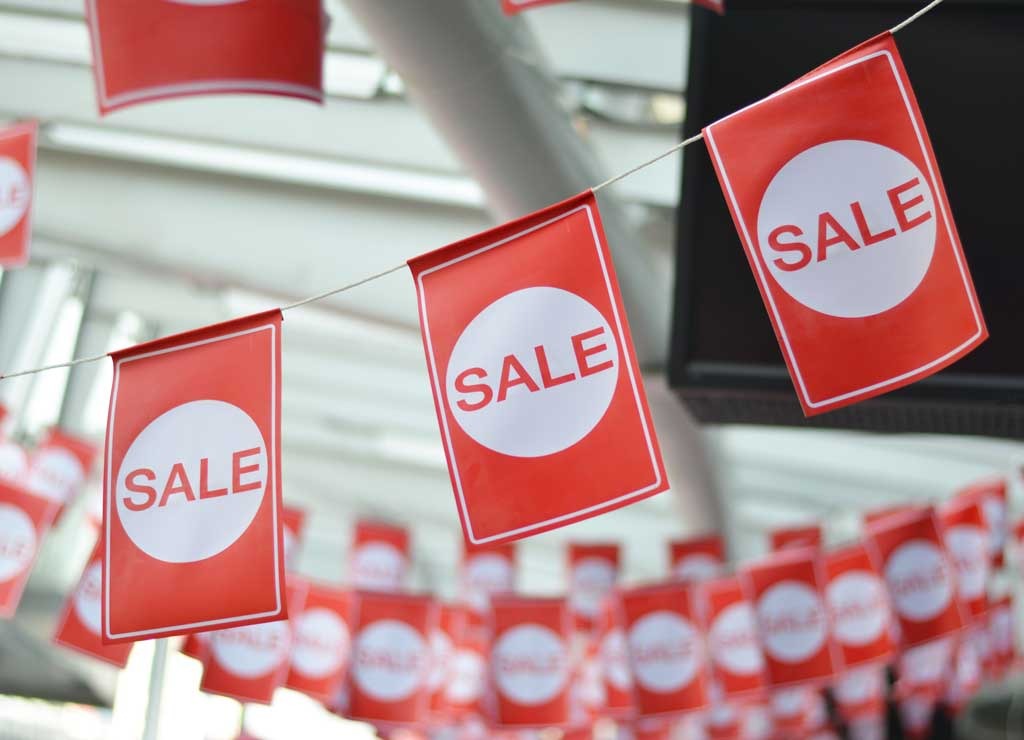
Products that have high-profit margins—like soda, chips, and other snack foods—are often stacked prominently at the end of aisles with irresistible signs and other eye-catching gimmicks. It’s not that these are great deals for you; it’s that they’re great deals for the grocery stores.
Sneaky 10 for $10 Deals
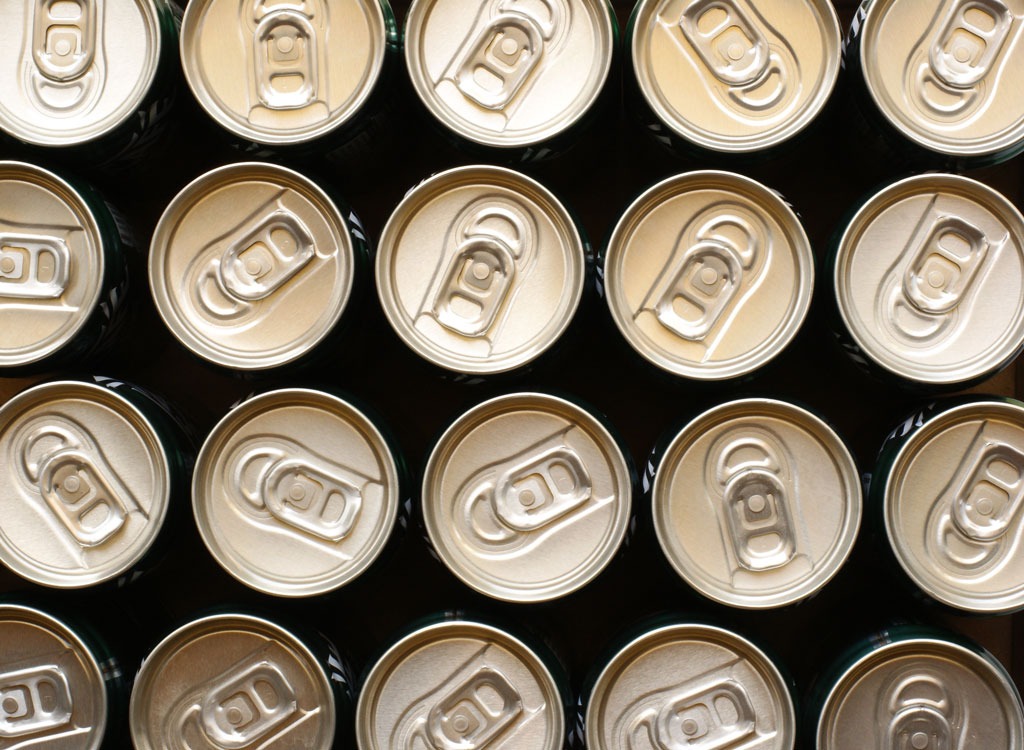
A store advertises 10 cans of soup for $10 and it seems like a pretty good deal—$1 each! It is, until you read the fine print that says you have to buy all 10 to get them for $1 each, otherwise they’re $1.75 per can. You don’t need 10, but you buy them anyway to get the deal—and that’s what stores want.
Pre-Cut Produce Ploy
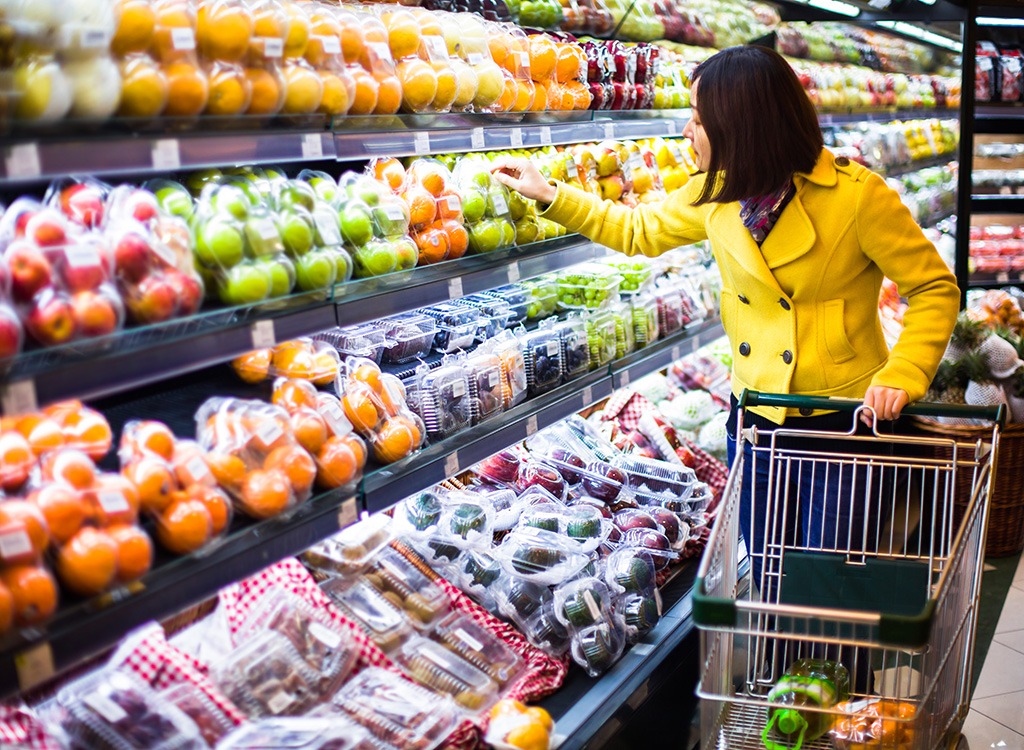
Cutting veggies and fruits can be one of the most tedious parts of cooking, so buying them pre-cut feels like a no-brainer. Grocery stores know this and charge extra—sometimes double—for the same amount of produce sitting uncut a few feet away. We vote for the D.I.Y. version where you make meal prep one of your top waist-whittling strategies!
Layout Swaps

You just figured out where everything is located in your favorite grocery store when—bam!—they switch everything around. The reasoning is simple: Changing your pattern exposes you to new products that will maybe, just maybe, end up in your cart.
In-Your-Face Smells
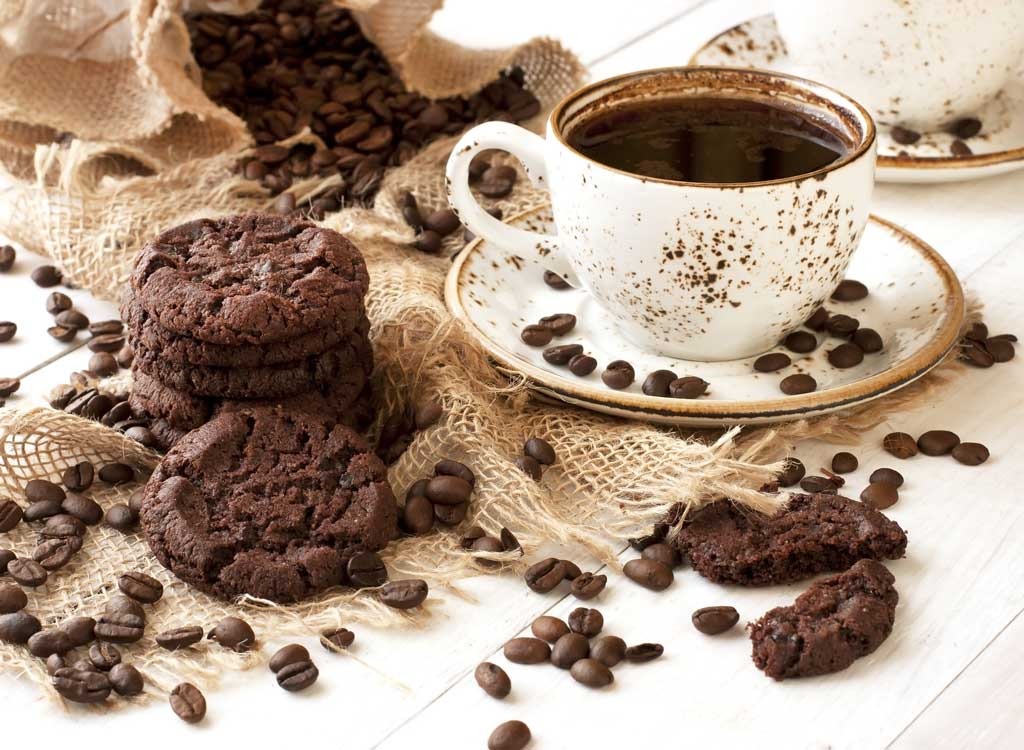
Just walking into a grocery store can be a sensory overload—as soon as you walk in you’re blasted with the smells of fresh-baked bread, coffee, and rotisserie chicken in the deli. These mouth-watering scents are put front-and-center for a reason: They make you hungry—and more likely to spend, spend, spend!
Slowing, Soft Music

Every grocery store plays slow, soothing music—and it’s not just because the manager likes it. Slow music is actually shown to make you calmer and walk slower, leading you to spend more time in the store, perusing and buying more stuff. Instead of aimlessly trying to decide what to buy while you enjoy a little James Taylor from the overhead speaker, how about you just take a cue from How a Nutritionist Spends $100 on Groceries? You’ll be surprised how far her dollars stretch!
Leaning on Loyalty
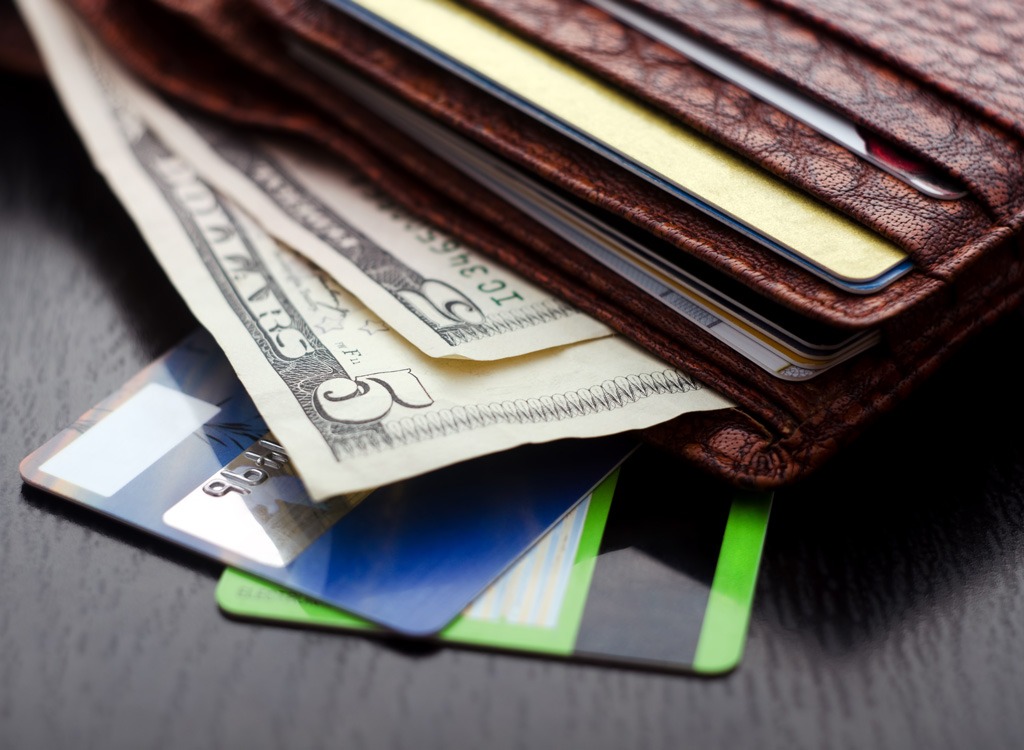
Loyalty cards are marketed as clubs that get you the best deals and extra bonuses, like money off a gas purchase. Sure, they can net you a deal, but the specials are sometimes the same that non-cardholders get. Plus, the idea of earning “points” with purchases—like for money off gas—might actually get you to spend more. The worst case scenario? The grocer may be allowed to share (er, even sell!) your information to other marketers. Read the fine print before signing up for loyalty cards at places you barely shop at.
.99 Problems
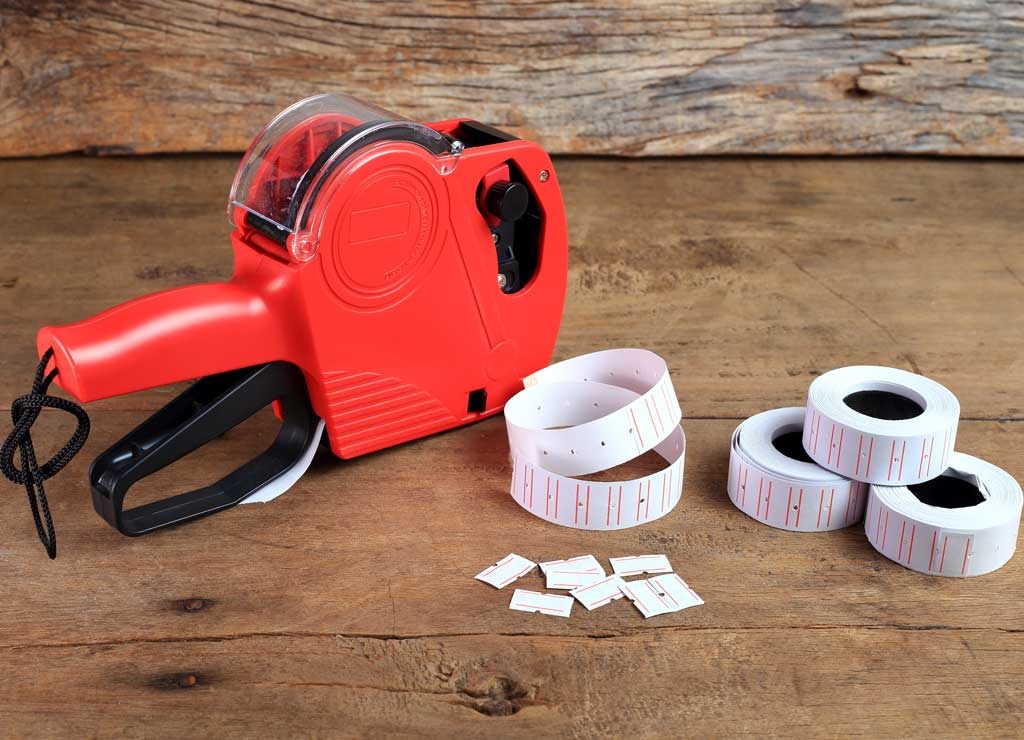
Prices that end in .99 seem silly—why not just make it easier on everyone and change $5.99 to $6.00? Well, it all has to do with the human brain. Researchers have found that people don’t fully process the numbers after the first one that’s read, so an item that is priced at $5.99 seems cheaper than $6.00. That penny could mean the difference between making the sale or not.
Free Samples
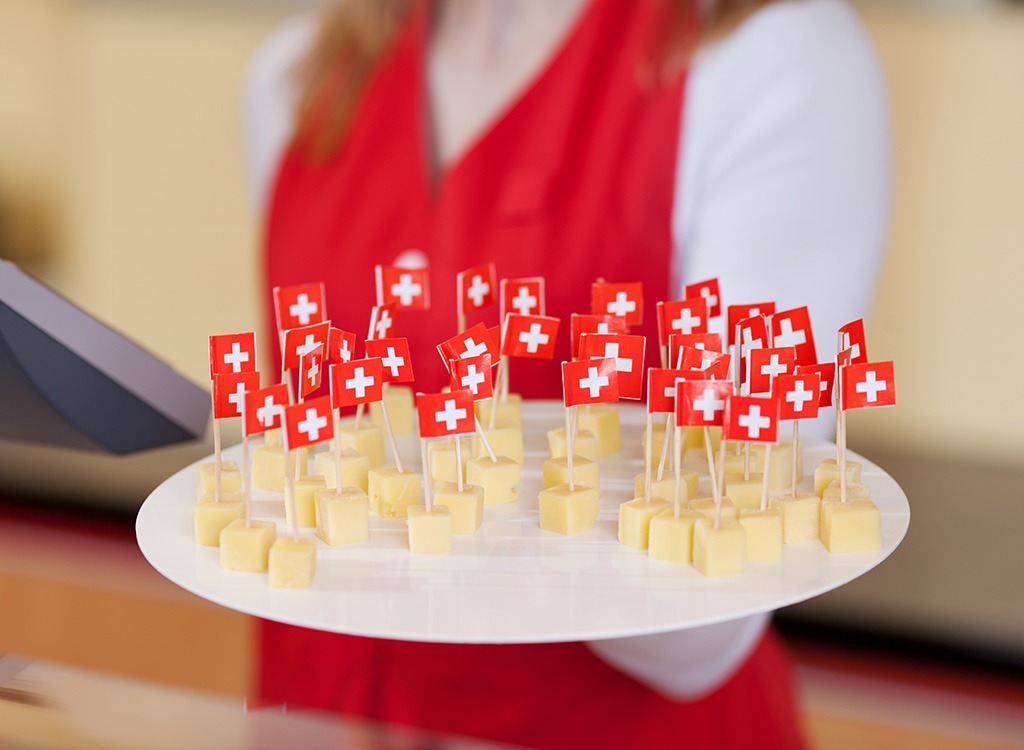
There’s a reason why grocery stores and retailers dole out samples regularly—these freebies get people to commit to the full-size thing. Everyone loves free food and getting the chance to try before you buy makes you feel better about your purchase.
DON’T MISS: 20 Ways to Save Big at Aldi
Low-Cal Pints Aren’t Actually Ice Cream
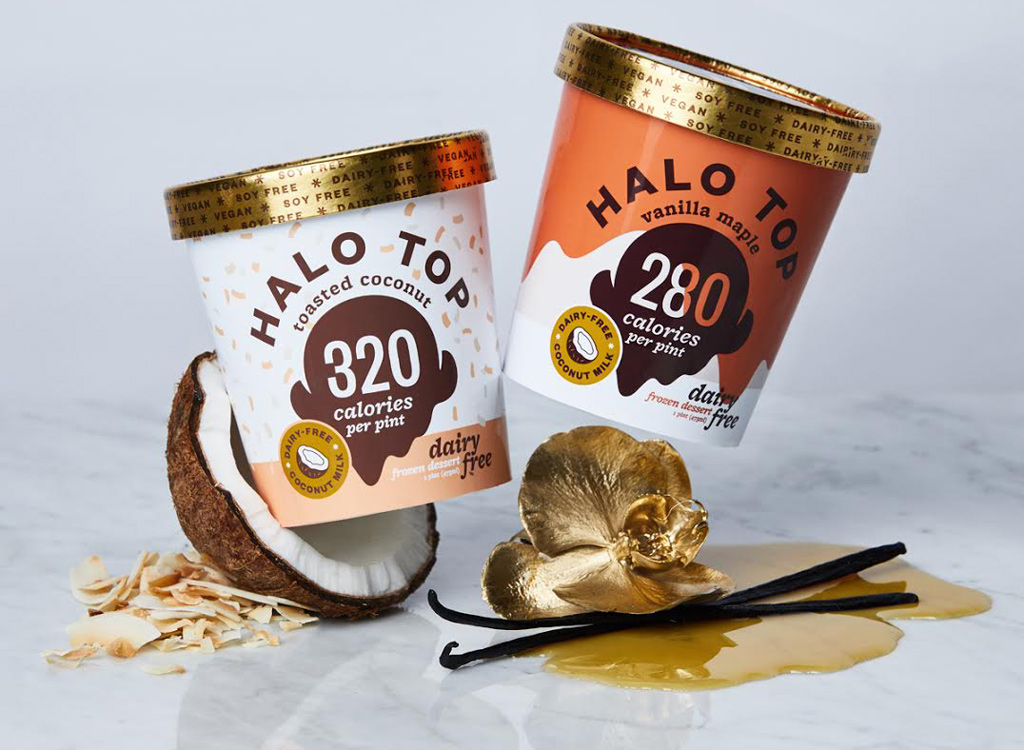
We’re all for low-cal options like Halo Top, but don’t pick up a pint thinking it’s real ice cream. If you look closely, you’ll find that the tubs are labeled “frozen dairy dessert” instead of ice cream because the FDA prohibits it. A product must consist of a minimum 10 percent dairy milk fat to be considered real ice cream, and these light picks don’t fit the bill. No harm in spooning into some frozen dairy dessert!
You’re Tempted Into Buying Fake Cheese
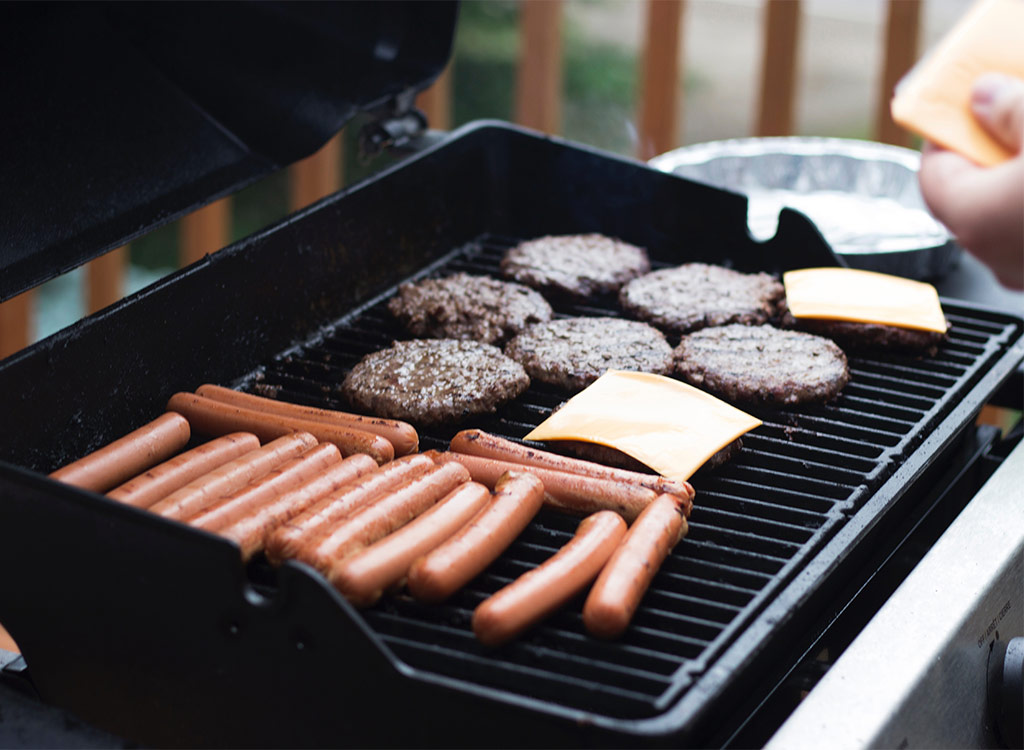
There’s a reason why questionable cheeses such as Kraft singles, Cheez Whiz, and Velveeta don’t look like real cheese: It’s because they’re not! The FDA requires these products to be labeled as “pasteurized processed cheese spread or product” because they’re often made with a mix of old cheese scraps and emulsifiers rather than real milk and enzymes.
Your Whipped Cream is Fake
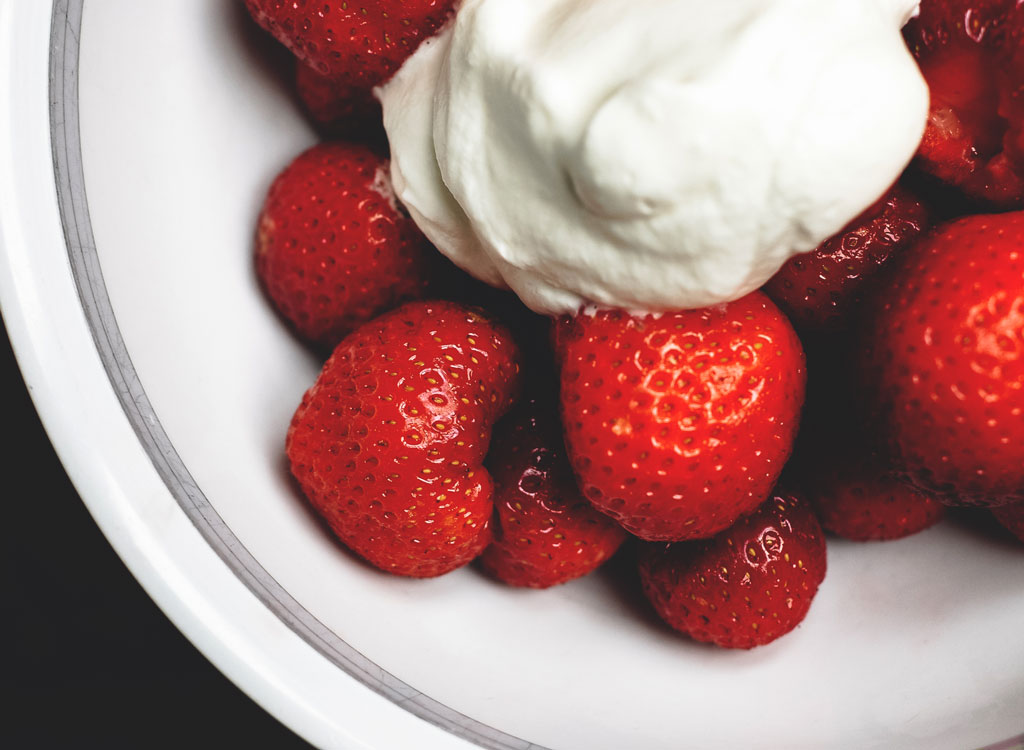
If you’re opting for Cool Whip over Reddi Wip, or better yet—homemade whipped cream—then you’re just getting a slew of hydrogenated oil, corn syrup, and artificial flavors rather than the real stuff. These imposters are dubbed “whipped topping” because they don’t actually contain real cream.
Are They Actually Selling the Creme de la Creme?
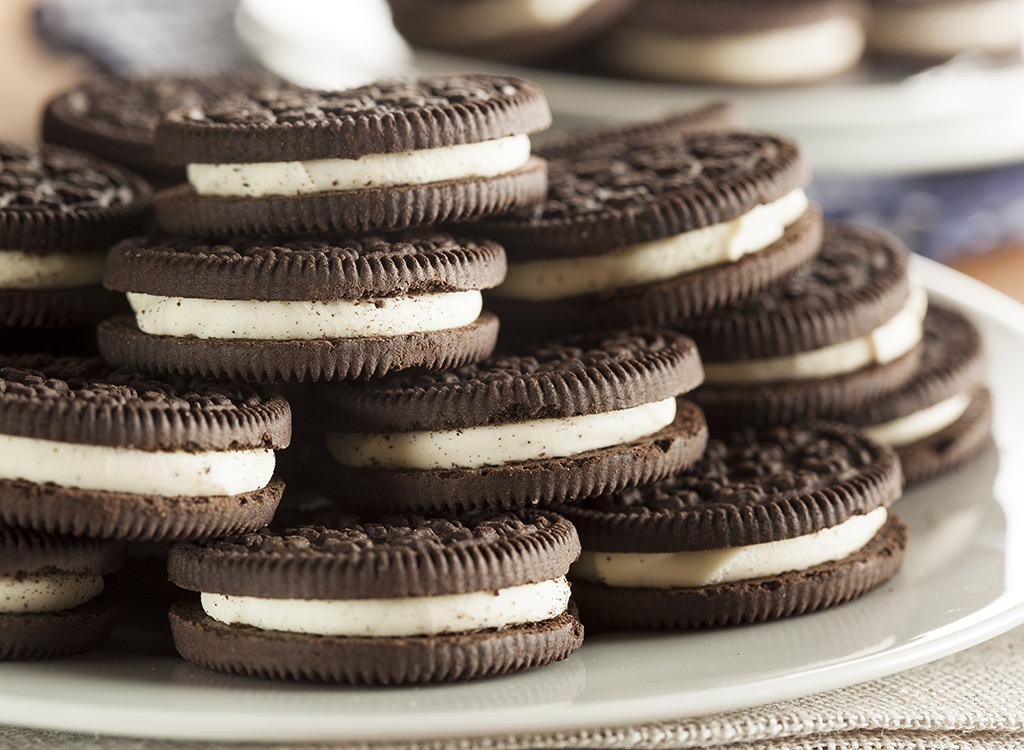
If you’ve been dunking milk’s favorite cookie since childhood, you’ve likely noticed that the “cream” in the Oreo is spelled “creme.” And it’s more of a play on words than a typo. Since Nabisco uses partially hydrogenated oil to replace dairy, the FDA doesn’t allow the cookie filling to be labeled as real cream.
They Label Non-Milk Items Incorrectly
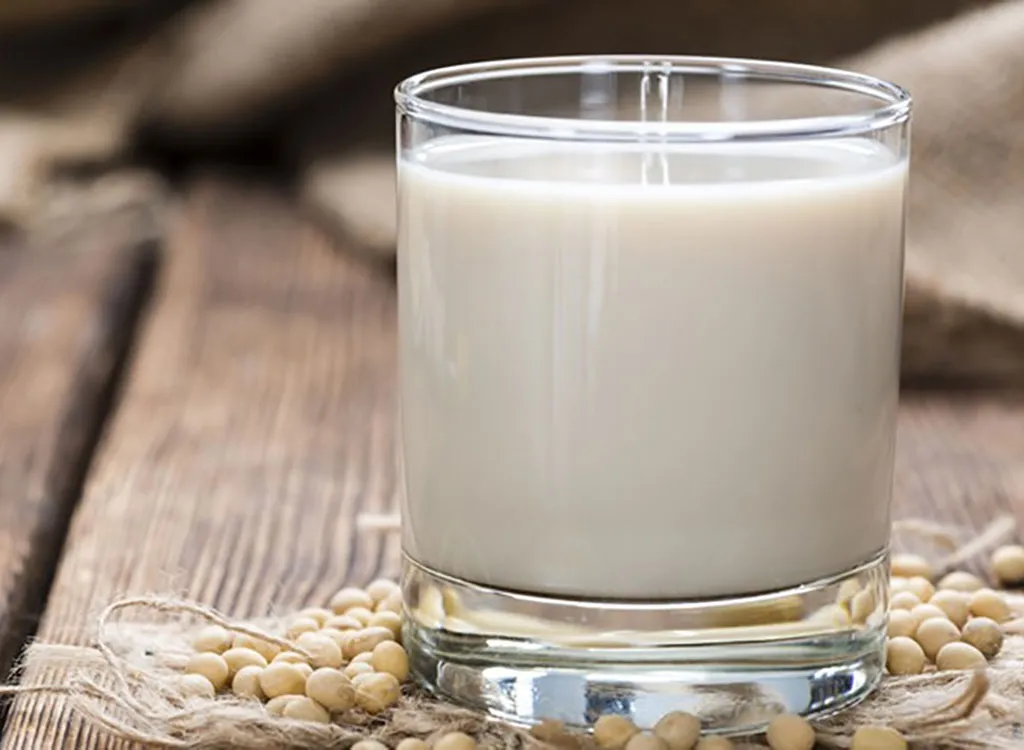
With the rising demand for non-dairy milks, dairy farmers are getting pretty angered that the stuff made out of soy, almond, coconut, and the likes are labeled as “milk.” In response, U.S. Food and Drug Administration Commissioner Scott Gottlieb recently announced plans to crack down on the case and enforce rules that these plant-based options can’t be labeled milks because they don’t come from cows. We’re just wondering what brands like Blue Diamond and Silk are planning to replace the controversial term with.
They Sold You Wood Pulp
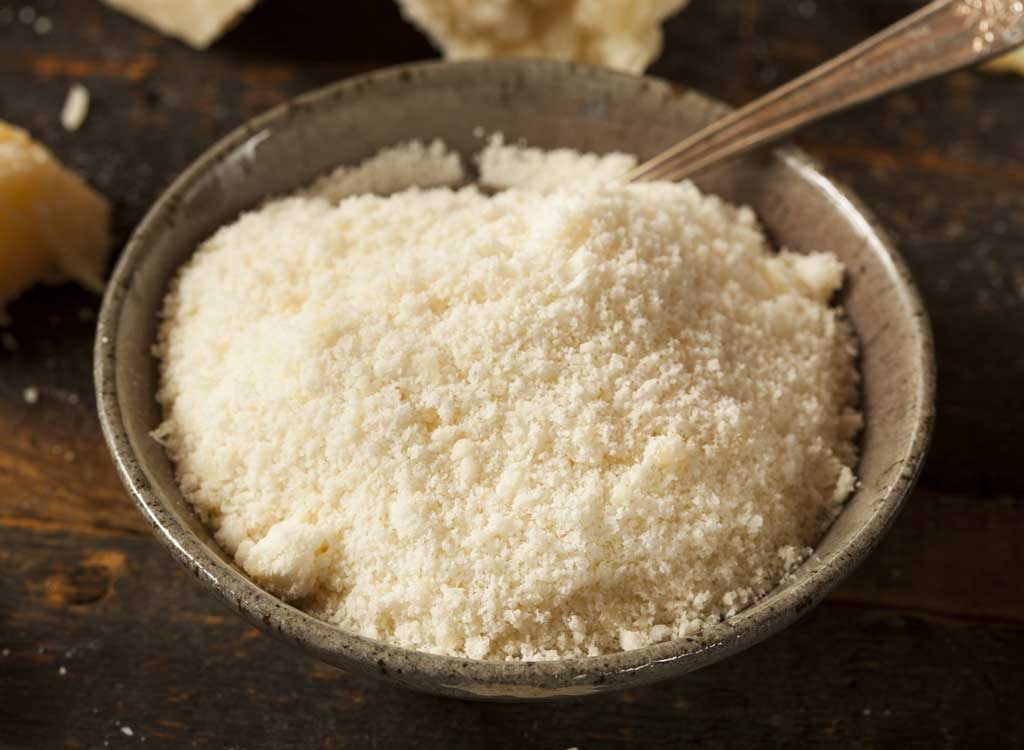
If you’ve ever noticed “cellulose” listed on grated parmesan cheese’s ingredient list, then folks, you’ve consumed wood pulp. Cellulose is used as a filler that prevents the parm from clumping up. And while the FDA concludes that it’s safe to use in food, the real problem is that companies use way more than than the four percent limit the FDA allows cheese products to contain. In fact, big brands such as Walmart’s Great Value and Kraft have faced litigation for bulking their parm with the stuff. Your best bet is to get a chunk of parm at the deli counter and grate it yourself.
They Market Fish as Crabmeat

It’s no secret that the main protein in your California roll isn’t real crab. Imitation crab, also known as crab stick and Krab, is a mix of finely ground seafood like whitefish and fillers such as eggs, transglutaminase (i.e. meat glue), and dyes that help the funky fish look rosy.
You’re Paying Extra for Fake Filet Mignon
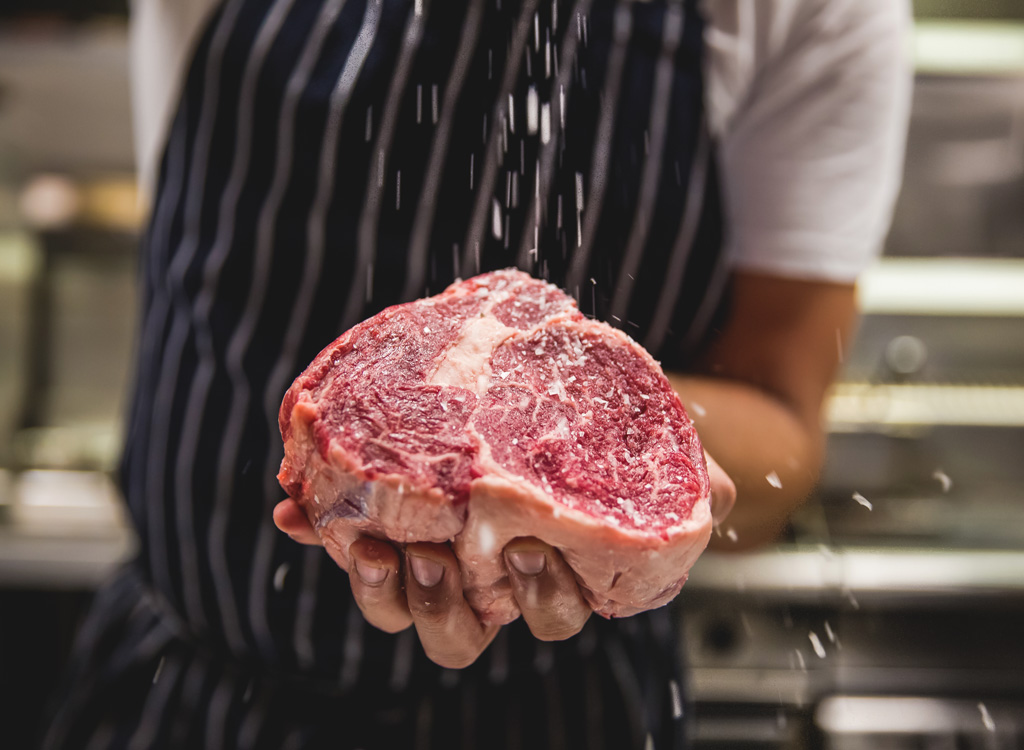
We’ve all heard about less-than-stellar ingredients being snuck into processed meats, which sort of explains the low price tag, but this custom shouldn’t apply to pricy cuts like filet mignon. Sometimes, ordering the tender steak will just render lesser cuts bound together. The USDA requires these cuts to be labeled, “been formed from pieces of whole muscle meat, or that it has been reformed from a single cut,” but restaurants, on the other hand, aren’t obligated to comply.
Maple Syrup?
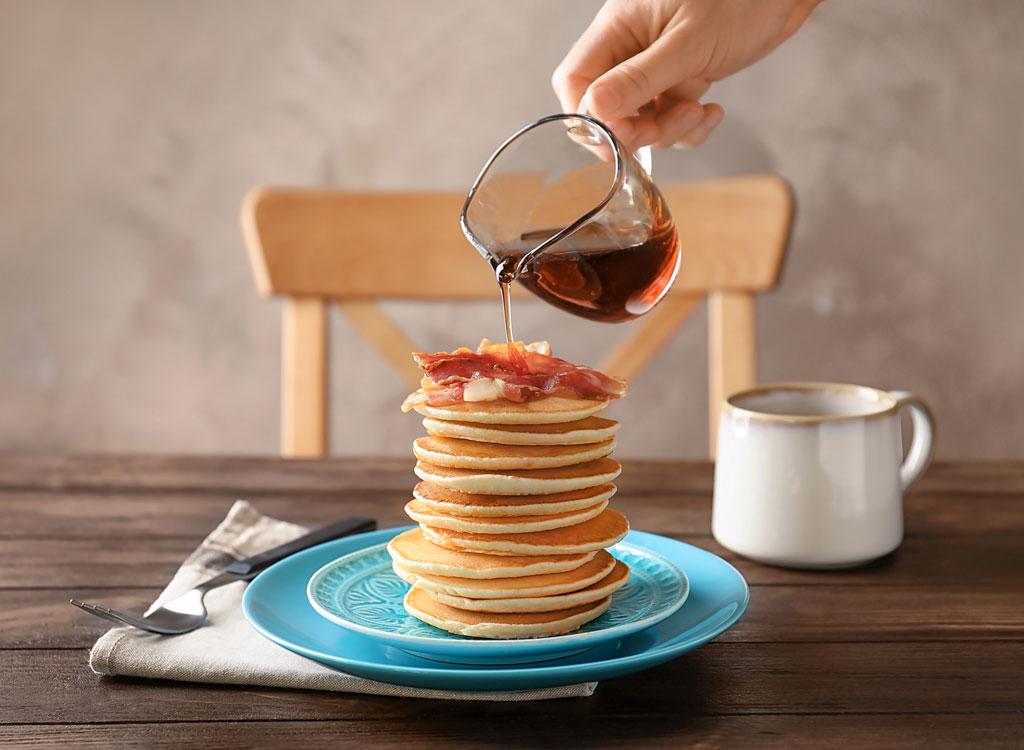
Sorry to Aunt Jemima and Mrs. Butterworth’s biggest fans—but these “original syrups” aren’t actually the real deal. Many commercial brands are just nutrient-void high fructose corn syrup rather than real, mineral-rich maple syrup.
‘Whole Wheat’ Bread
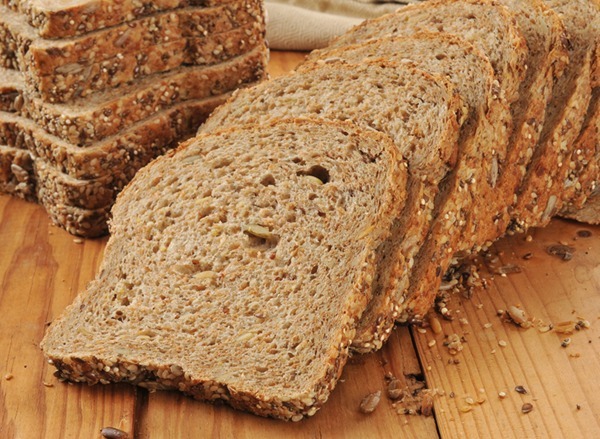
Many bread loaves state that they’re whole grain to entice you into buying a seemingly healthier (and usually pricier item). However, unless the product lists “100% whole grain” in the ingredient list, then it’s probably not the best pick. To help you streamline the bread aisle, check out 20 Best & Worst Store-Bought Bread For Every Health Goal.
They Display Organic Produce First
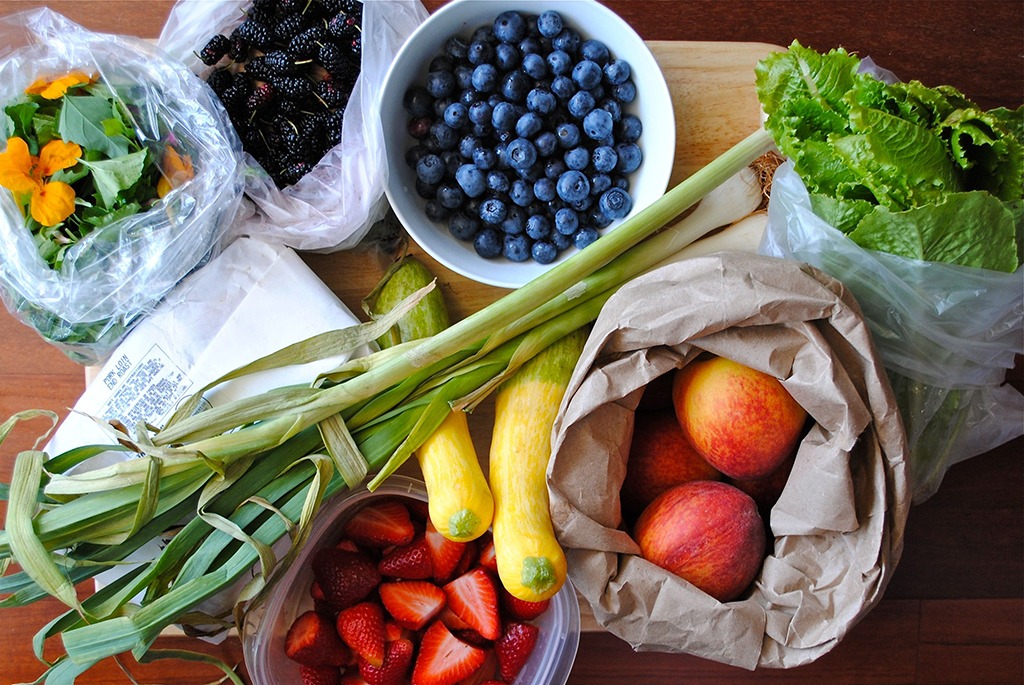
Some groceries display all the organic produce first so you’re left thinking that’s all the produce they have. However, that’s not usually the case. The local and conventionally-raised produce is displayed further in the grocery—you just have to scout it out.
Fish Oil Pills are Always on Sale
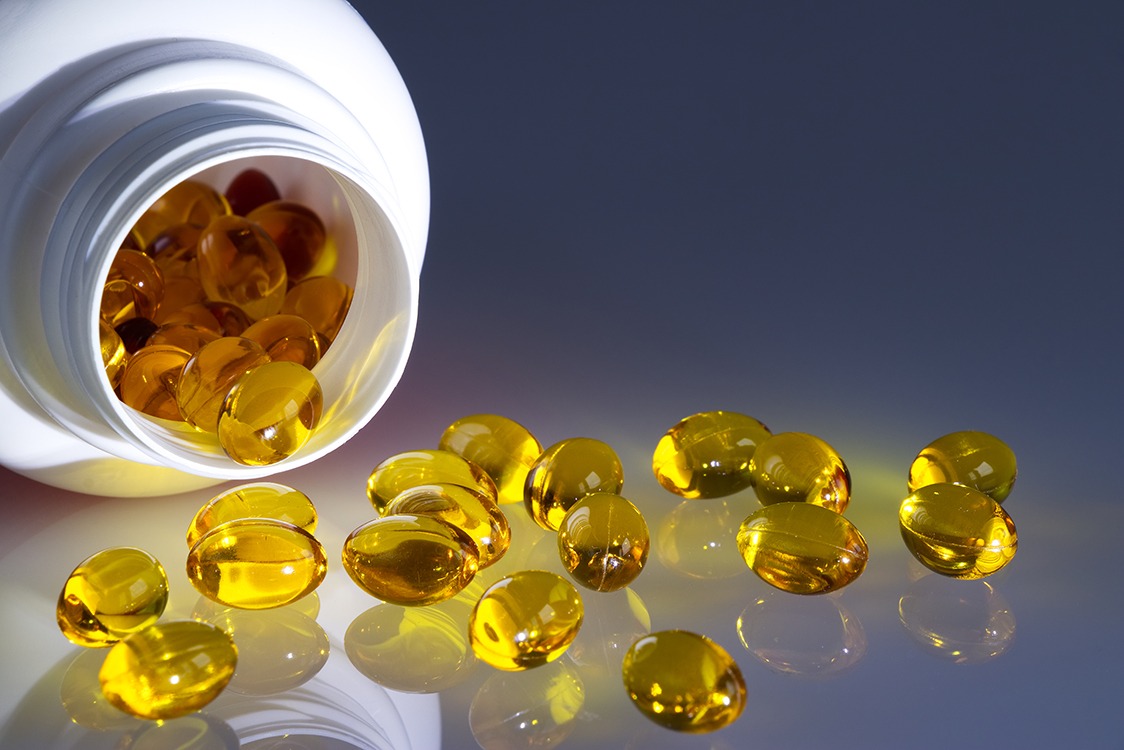
With so much recent research surrounding fish oil’s benefits against heart disease, it’s no wonder why people are investing big bucks into the supplement. And grocery stores are also catching on to this trend. Just because the supplements are almost always on sale, that doesn’t mean you should buy into the scam. A National Institutes of Health study found that omega-3 supplements (such as fish oil) showed no benefit against cognitive decline. Put simply: stop wasting your money.
They Hide Dairy and Meat Behind Junk Food
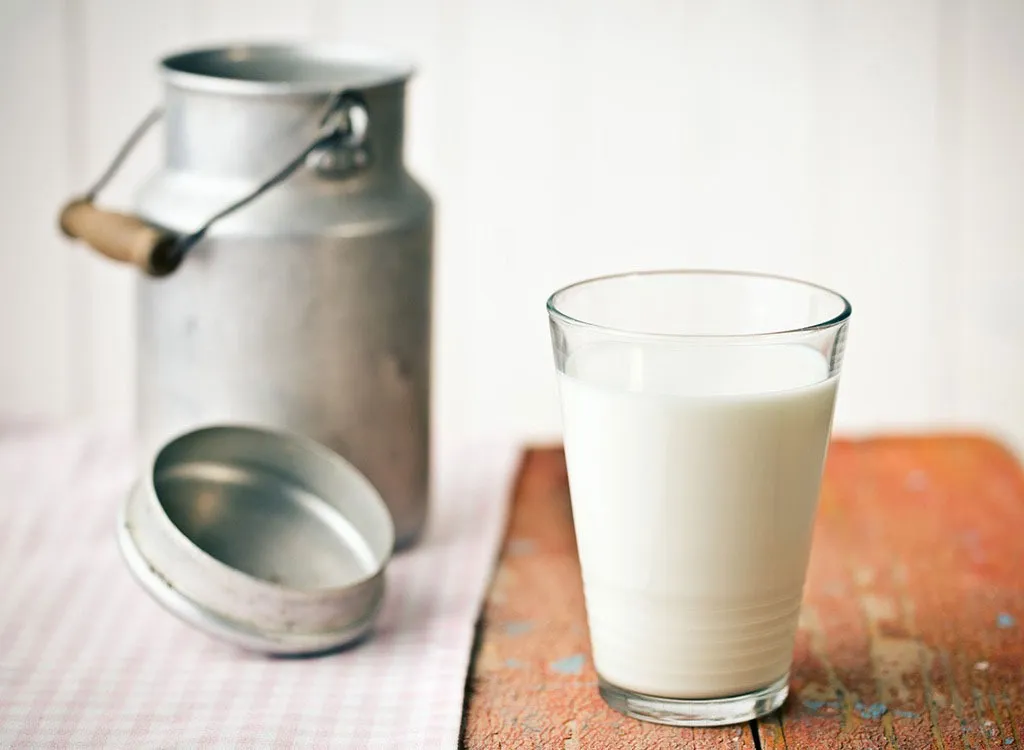
When you enter a grocery, chances are you’re bombarded with the plethora of baked goods, bags of potato chips and packaged snacks at the front of the store. But as you cart around further, you realize that dairy and meat are strategically placed at the back of the store. This forces you to walk through every aisle, tempting you to stock up on more foods, before you get what you really need.
They Put Flowers Up Front
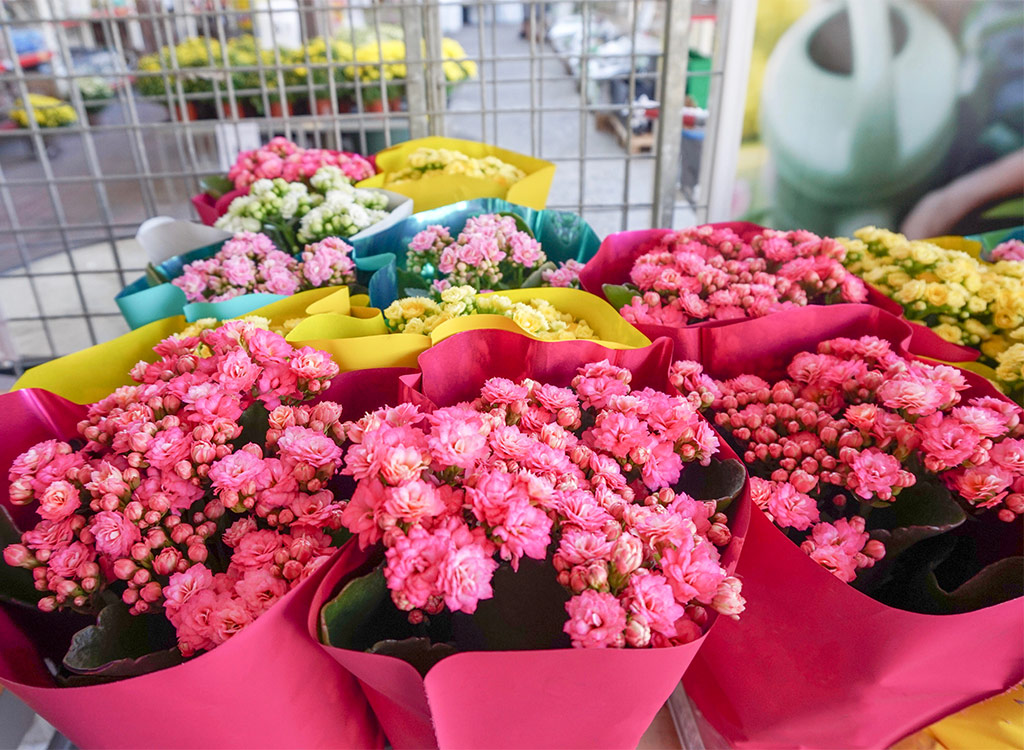
When you walk into Trader Joe’s, Whole Foods, and other grocery stores, the first thing you see other than produce is flowers. This gives shoppers the impression that the flowers, and the rest of the items in the store, are freshly picked.
They Change the Lighting
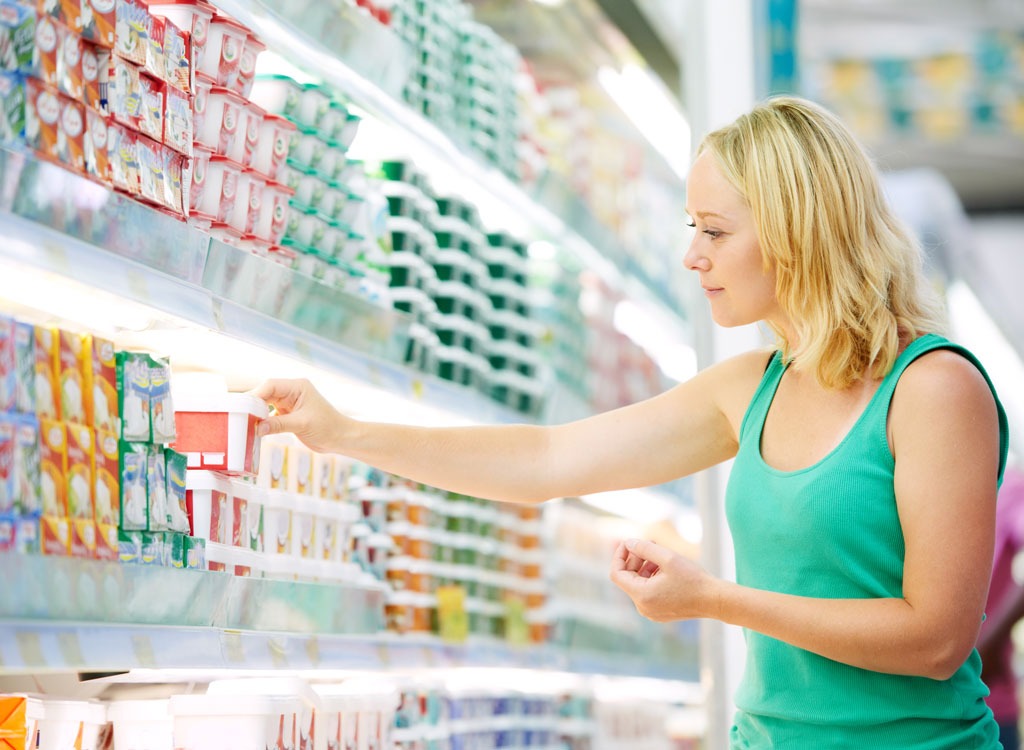
Remember when the grocery store would have a “thunderstorm” to spray water on the produce? As cool as that was when you were accompanying your mom on her errands, it actually is a ploy to make the produce seem fresher—the light bounces off the fruits and veggies to give it a fresher look, but it actually is bad for the produce. The thunderstorm is just used as a way to get your attention.
They Make You Enter Through a One-Way Door
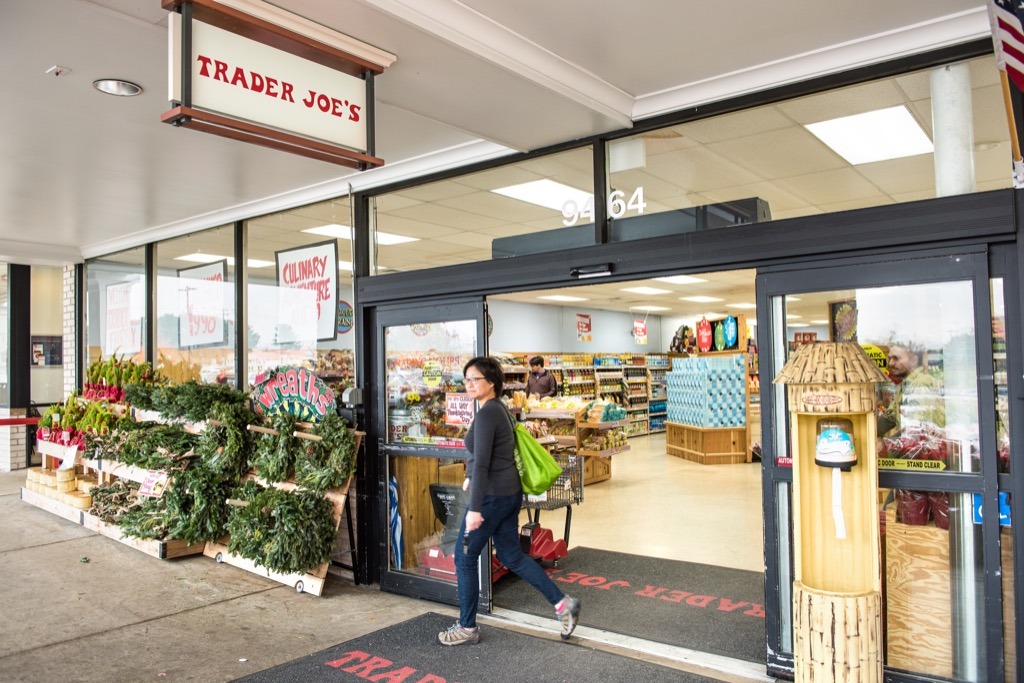
Sometimes, the only way you can exit a grocery store after coming in a one-way door is to walk through the entire store and be enticed by the different foods they have to offer. This is done on purpose so you don’t walk out empty-handed.
You’re Tricked Into Buying the Wrong Vanilla
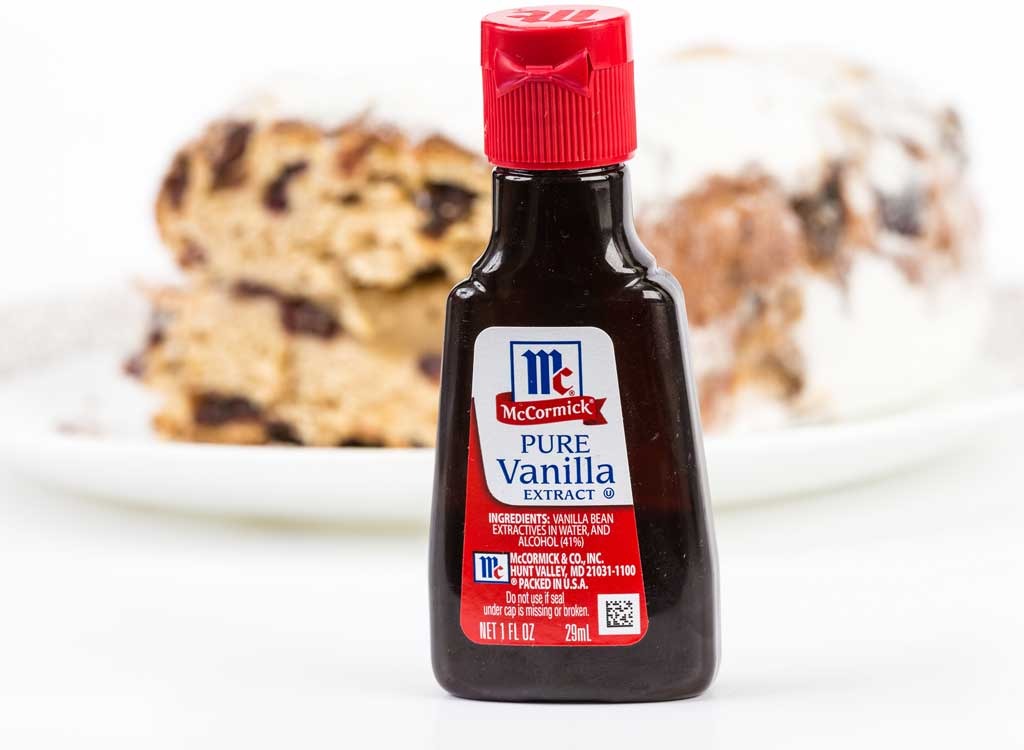
Unlike real vanilla extract, which is made by soaking vanilla pods in alcohol, imitation vanilla is synthesized in a lab out of a flavor compound called vanillin. The difference? While the former is natural and the other isn’t, real vanilla boasts a richer scent and flavor—as well as a higher price tag. If you want the real stuff, make sure the label says “pure vanilla extract.”
‘Limited Time’ Lies

“Limited time only!” “Get them before they’re gone!” Grocery stores are notorious for using these phrases in their advertising to trigger a sense of urgency in customers. We love to feel like a part of a special club—and we definitely don’t want to miss out on something cool or a fleeting season—so stores say things like “limited-time only” to tap into that. The reality: It’s probably not limited-time only. And if it is? Well, if it’s a profitable product, you can bet it’ll be back soon if it’s not completely out of season. Now that you’ve learned so many tricks of the trade, don’t miss these Best and Worst Foods at Trader Joes!